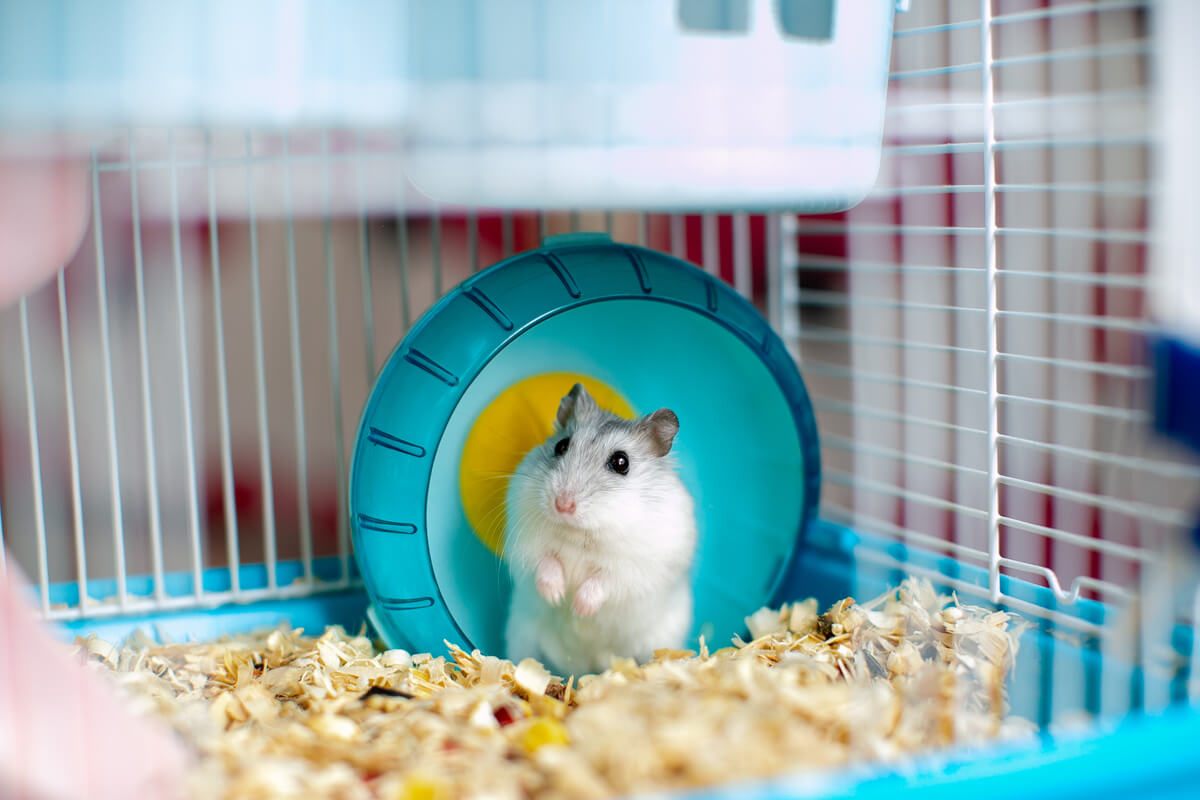Is it Good to Have 2 Hamsters in the Same Cage?

It is easy to think that several hamsters in the same cage can coexist fine, because we tend to think that every living thing (human or not) needs company to be happy. Besides, in pet shops, there are always several specimens of each species crammed together without any apparent problems.
So, if you’re thinking of bringing another of these small rodents into your home, you should consider very seriously whether to put it next to the one you already have or not. To help you decide, here’s everything you need to know about it.
Hamster characteristics
Hamsters (from the Cricetinae family) are small mammalian rodents native to the Middle East and North America that became popular as pets thanks to their ease of breeding in captivity. They’re characterized by having pouches on either side of their mouths, which allow them to collect food to take back to their burrows.
Hamsters are nocturnal and crepuscular, leaving at sunset and returning at dawn. During the day they rest in their burrow, which they dig a few centimeters under the ground, to protect themselves from possible predators.
They’re animals with a high reproductive capacity, whose sexual maturity and number of offspring vary depending on the species. Generally, the smaller the size of the hamster, the earlier the specimens reproduce, as their life expectancy tends to be short.

Is the hamster social or solitary?
Another of the most important characteristics of the hamster is represented by its solitary habits. In the wild, these animals only seek each other out for mating during the spring and summer months, so the groups you find are made up of mothers with their young.
In addition to being solitary, hamsters are territorial. When another of its species enters its space, it will attack it to get it to move away. Therefore, having two hamsters in a cage means constant fights, because the one that’s being attacked won’t be able to leave.
This doesn’t mean that the hamster can’t socialize with its human. If you get them used to the handling and reduce their daily stress to a minimum, you’ll be able to interact positively, as the animal will have its space and a place to hide if it feels threatened.
Is it good to have two hamsters living together in the same cage?
The answer is no. As we told you above, they’re solitary animals and jealous of their space. Forcing them to live with one of their own kind isn’t only stressful for them, but the fights will be constant. One of them may even die.
This is independent of sex, i.e. you can’t have two males or two females together. Although males are less territorial than females (they don’t do parental care, so they don’t have the instinct to protect the litter), they also fight for shelter and food.
So what about pet stores? They don’t fight there, do they? In these establishments, they sell very young animals, almost always litters recently separated from their mothers, so it’s quite normal that they still don’t have their aggressive instincts. However, they’ll eventually end up fighting if they aren’t separated.
Hamster reproduction
You may find yourself with a pregnant female and have no way of knowing. What to do then? During lactation, there’ll be no problem, as the mother will take care of her young until they’re independent.
However, you’ll need to keep the mother’s stress to a minimum, otherwise she may kill or even eat the babies.
The siblings will not fight each other until they grow up, but you will have to separate them when they reach maturity. This will not only prevent aggression problems, but will also prevent them from breeding with each other. You should provide separate housing for them when the time comes.
How do I prevent two hamsters from fighting?
There’s a very small chance that two males from the same litter can live together, and only if they’ve been bred together. If you’re lucky in this respect, you’ll also have to do everything you can to make it easier for them to live together.
The cage should be large enough for both animals to establish an area as their own. However, there can be a common area where they have toys and exercise equipment, but don’t expect them to interact too much – they’re more likely to take turns using them.
Be sure to socialize with each of the animals separately every day to get them used to handling.
Each hamster should have its own bowl of food so they don’t fight over it. The cage should also be placed in a sunny, draught-free location at a temperature of 20-22 degrees Celsius (71.5 F)

But, despite all these precautions, if you start to see fights, then you’ll have no choice but to separate them. Try to take care of any wounds quickly to avoid infections. As a tip, if you have no choice but to take in two hamsters in the same cage, have an extra cage for these cases, as they may need to be separated on more than one occasion due to fights or illness.
All cited sources were thoroughly reviewed by our team to ensure their quality, reliability, currency, and validity. The bibliography of this article was considered reliable and of academic or scientific accuracy.
- Powers, J. B., & Winans, S. S. (1975). Vomeronasal organ: critical role in mediating sexual behavior of the male hamster. Science, 187(4180), 961-963.
- Landau, I. T. (1975). Light-dark rhythms in aggressive behavior of the male golden hamster. Physiology & behavior, 14(6), 767-774.
- Fisher, P. (2007). Unusual Pet Care: Vol. I. Zoological Education Network.